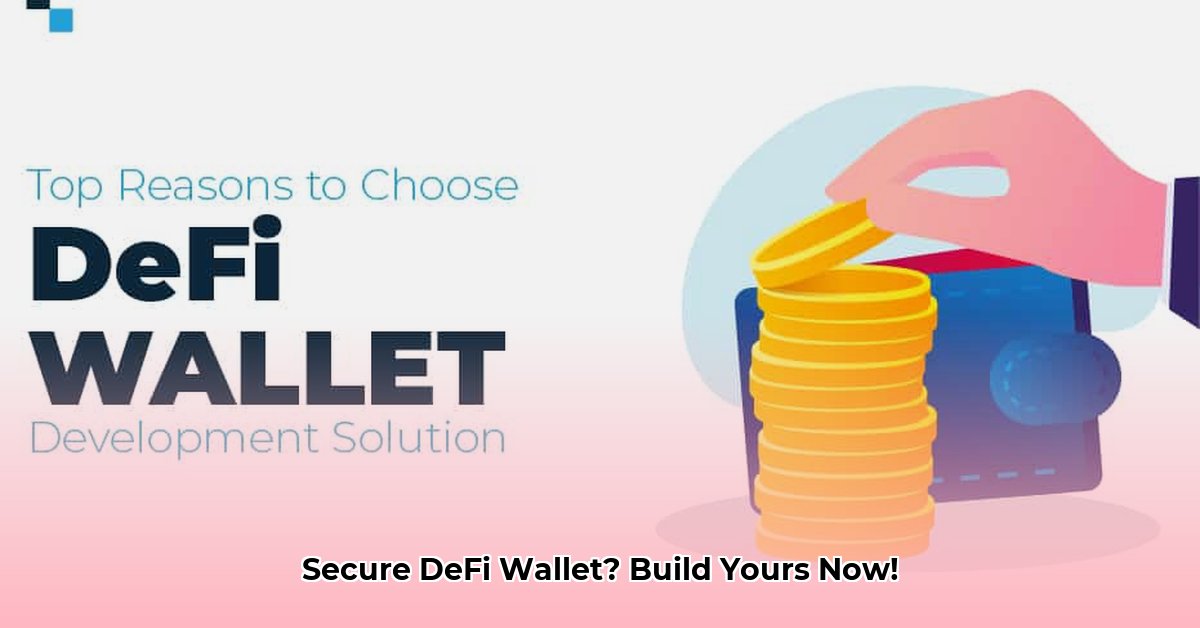
DeFi Wallet Development: A Practical Guide
The decentralized finance (DeFi) ecosystem is booming, creating a surge in demand for robust and secure digital wallets. This guide provides a comprehensive roadmap for developers and investors looking to navigate the complexities of DeFi wallet creation. Building a successful DeFi wallet requires more than just coding skills; it necessitates a strategic understanding of the competitive landscape, meticulous security protocols, and a user-centric design approach. This guide will equip you with the knowledge and actionable steps to build a secure and user-friendly DeFi wallet.
Navigating the DeFi Wallet Landscape: A Competitive Analysis
The DeFi wallet market is fiercely competitive. Wallets range from web-based solutions and mobile applications to desktop programs and browser extensions, each targeting specific user needs and preferences. Some wallets specialize in GameFi (gaming) and NFTs (non-fungible tokens), while others offer white-label solutions, allowing customization from pre-built frameworks. The initial development investment can vary significantly—from $50,000 to over $150,000—depending on the complexity and features incorporated. This high barrier to entry underscores the importance of strategic planning and a well-defined value proposition. How will your wallet differentiate itself in this crowded marketplace?
Your Step-by-Step Guide to DeFi Wallet Creation
Building a secure and successful DeFi wallet is a multi-stage process demanding meticulous planning and robust execution. The following steps outline a practical approach.
1. Laying the Foundation: Planning and Design (Weeks 2-4)
Before coding begins, a detailed blueprint is essential. Define your target audience, their needs, and the unique features that will set your wallet apart. The user interface (UI) should prioritize intuitive navigation and exceptional usability. The initial design phase is critical; it shapes the user experience and subsequent development process.
2. Choosing Your Tech Stack: The Right Tools for the Job (Weeks 4-6)
The technology stack significantly impacts your wallet's functionality and security. Solidity and Rust are popular choices for smart contract development, offering varying strengths in scalability and security. Your front-end framework selection should align with your UI design and development goals, considering trade-offs between development speed and scalability.
3. Smart Contract Development: The Heart of Your Wallet (Weeks 6-12)
Smart contracts are the core of your wallet, managing its security and functionality. Impeccable coding is crucial; a single error can compromise the entire system. Implement best practices from the outset, including techniques like formal verification to prove the correctness of your code. Thorough testing at this stage is paramount.
4. Designing Your Wallet Architecture: Security First (Weeks 12-16)
Secure private key management is non-negotiable. Implement robust encryption methods, such as AES-256 (Advanced Encryption Standard with 256-bit key), multi-factor authentication (MFA), and consider hardware wallet integration for enhanced security. A robust architecture is the foundation of a secure wallet.
5. Building Your User Interface (UI): Usability Matters (Weeks 16-20)
A user-friendly interface is paramount for adoption. Seamless integration with decentralized applications (dApps) is key, and thorough user testing throughout the development process will identify usability issues early. A well-designed UI significantly enhances user experience.
6. Security Audits: Don’t Cut Corners (Weeks 20-22)
Independent security audits are non-negotiable. Engage reputable firms to thoroughly examine your code for vulnerabilities. Their expertise helps identify and mitigate risks before malicious actors exploit them.
7. Testing and Deployment: Launch with Confidence (Weeks 22-26)
Rigorous testing is crucial before public release. This includes unit, integration, and system testing. Establish a robust monitoring system for post-launch issue detection and resolution.
8. Maintenance and Updates: The Long Game (Ongoing)
Post-launch, ongoing maintenance and updates are crucial. Regular security patches address newly discovered vulnerabilities, and consistent user feedback improves the user experience. Adapting to market changes and emerging technologies ensures long-term success.
Security: Your Top Priority
Security is paramount. A single breach can irrevocably damage your reputation and financial stability. The following table outlines key security areas and mitigation strategies:
| Feature | Risk Level | Mitigation Strategies |
|---|---|---|
| Private Key Management | Very High | Robust encryption (AES-256), multi-factor authentication (MFA), secure offline seed phrase storage |
| Smart Contract Security | Very High | Formal verification, rigorous audits by reputable security firms (e.g., Trail of Bits, Quantstamp) |
| UI/UX Vulnerabilities | High | Thorough testing (penetration testing, fuzzing), user feedback analysis |
| Data Breaches | High | Data encryption (at rest and in transit), compliance with relevant data privacy regulations (GDPR, CCPA) |
| Regulatory Compliance | Medium | Stay updated on regulations (e.g., AML/KYC), seek legal counsel |
Competitive Advantages: Standing Out from the Crowd
To thrive in the competitive DeFi wallet landscape, consider these factors:
- Unique Selling Proposition (USP): What makes your wallet unique? Superior security, innovative features, or a specialized focus (like NFT support)?
- Target Market: Who are you targeting – casual users or crypto experts? Tailoring your wallet to a specific audience is crucial.
- Market Trends: Leverage emerging technologies (e.g., GameFi, Metaverse integration) to attract users.
Building a successful DeFi wallet is a long-term endeavor. Continuous improvement, adaptation to market demands, and an unwavering commitment to security are fundamental to achieving sustainable growth and market dominance. The detailed steps outlined in this guide, coupled with diligent planning and execution, offer a strong foundation for creating a DeFi wallet that not only survives, but thrives.